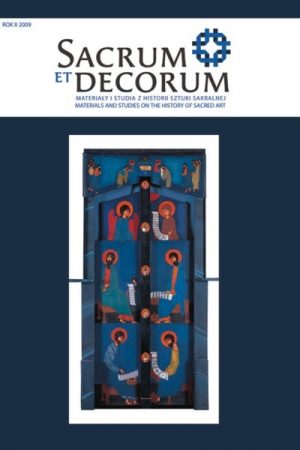Art – experience – analysis. On certain aspects of Michael Brötje’s theory
Keywords:
ABSTRACT ART, HERMENEUTICS, MICHAEL BRÖTJE, THEORY OF INTERPRETATIONAbstract
The oeuvre of Michael Brötje, the creator of a new existential-hermeneutic research perspective in art history, includes numerous analyses of old art employing traditional religious iconography. The analysis of Otto Piene's work published in the current issue of Sacrum et Decorum is one of his rare interpretations of abstract art. In a key moment in the analysis, he invokes the famous concepts of tremendum and fascinosum, which were introduced over a century ago by Rudolf Otto to express the dual nature of the human experience of the sacred as something at once menacing and fascinating. The article seeks to present Brötje's theory and thus set the ground for the understanding of his analysis of Otto Piene's work. Brötje's theory grounds the human experience of art in the soul [Seele]: it is in the spiritual [seelisch], rather than the intellectual or the psychological, dimension that we can actualize our essential disposition, transcend towards that which determines us, and project the Absolute onto the mediating plane of the work of art. In the spiritual [seelisch] experience of the self, this process is unconscious; nevertheless, it remains firmly grounded in the logic of viewing. It is this logic that Brötje sets out to capture in his analyses. The analysis of Otto Piene should also be seen in this context. In the process of analysis, a gradual but systematic reconstruction of 'the viewing logic' brings the categories of Rudolf Otto up to the surface. The concepts of tremendum and fascinosum, however, are only used as indicators, which point back to the knowledge shared between the author and his readers and thus outline an area of reflection, which is parallel to the previous, 'fully valid perception' of the meaning of the work.Downloads
Downloads
Published
How to Cite
Issue
Section
License
Copyright (c) 2009 Sacrum et Decorum

This work is licensed under a Creative Commons Attribution-NonCommercial-NoDerivatives 4.0 International License.
In line with the Open Access policy, authors retain full copyright to their articles – without restrictions.
Authors can deposit their articles in a repository of their choice.


